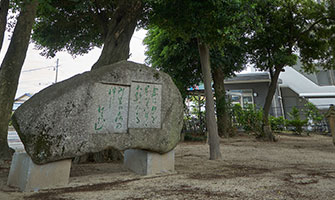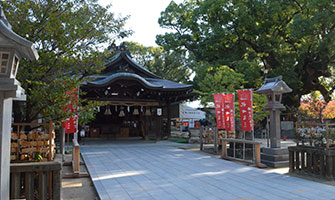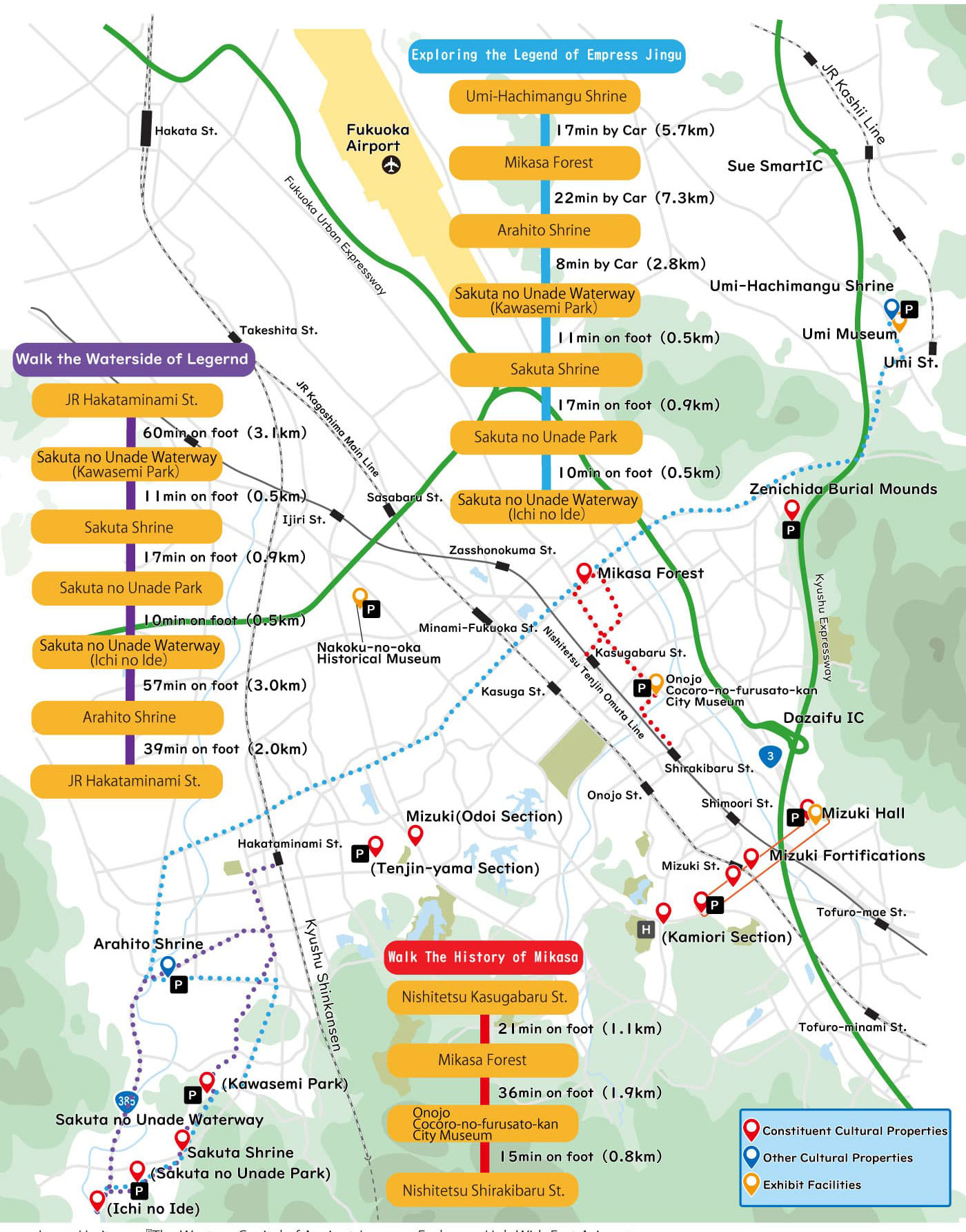Exploring the Legend of Empress Jingu
In Tsukushi (modern-day Fukuoka Prefecture), numerous place names are intertwined with the legend of Empress Jingu. Her enigmatic legacy continues to draw people in. By visiting these legendary sites, you’ll uncover a new facet of Dazaifu.

Empress Jingu, a legendary empress of ancient Japan, is mentioned numerous times in the Nihon Shoki, Man’yoshu, and other historical texts, and several sites around Dazaifu bear names associated with her. As Empress Jingu was traveling from Kashii Shrine to the present-day city of Asakura, the kasa hat she wore was blown away by the wind. The place the hat blew off was named “Mikasa” and the forest where the hat landed was named “Mikasa no Mori.” In ancient times, Dazaifu was located in Mikasa District, and nearby Mt. Homan was referred to as “Mikasa-yama.”
The Sakuta no Unade (“split field canal”) Waterway also derives its name from a legend associated with Empress Jingu. According to the tale, as Jingu attempted to bring water from the Nanokawa (Nakagawa) River to irrigate a shrine’s rice fields, lightning struck, splitting a large rock that had blocked her path and allowing water to flow. Later, when Empress Jingu gave birth to Emperor Ojin in Kada, Tsukushi, the area was named “Umi” (“birth”). At Umi Hachimangu Shrine, a shrine worshipped for easy childbirth, there is a grove of camphor trees known as “Kada no Mori” that remains cherished by many.




